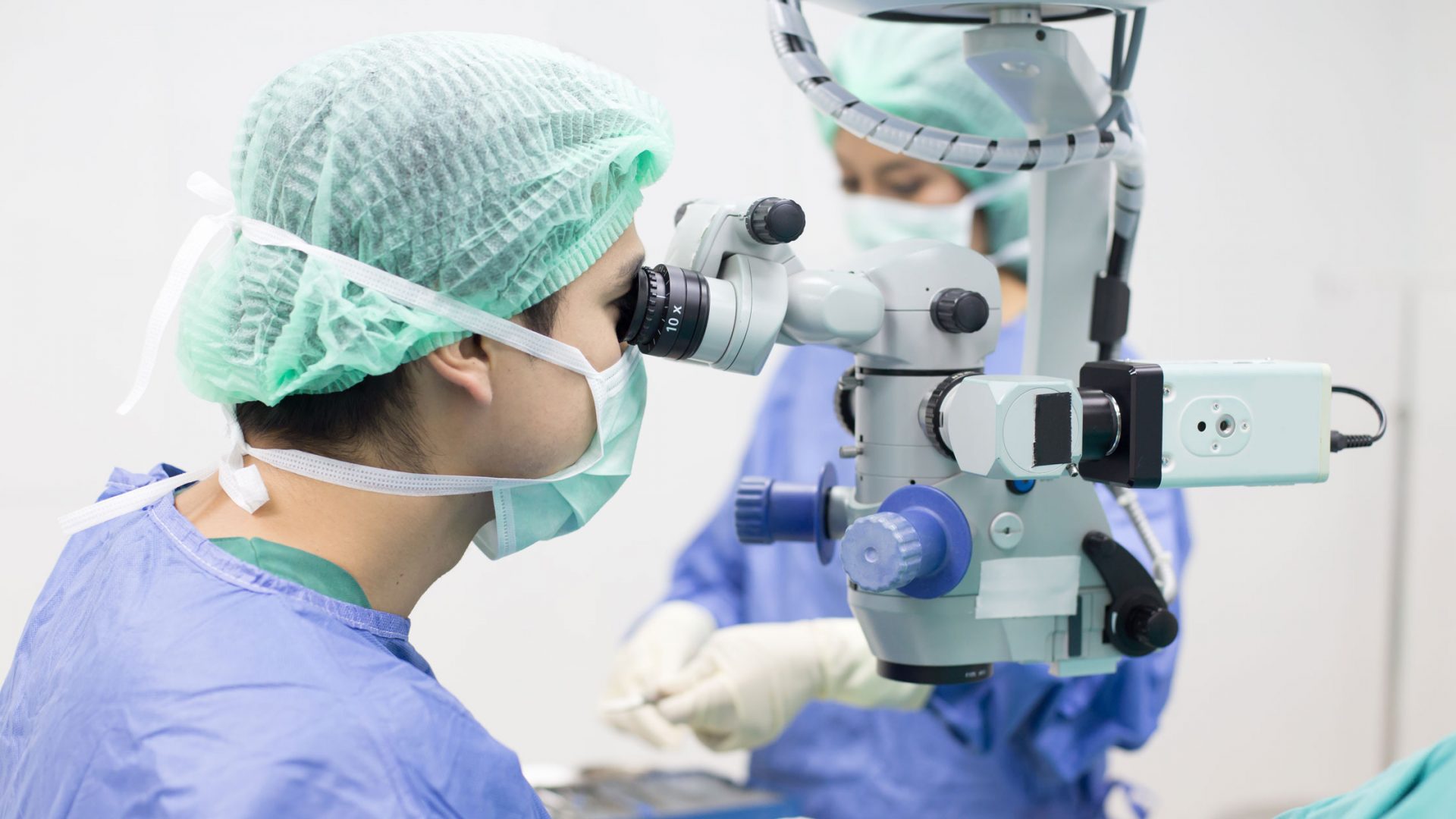Micro-invasive glaucoma surgeries (MIGS) are widely used today by both glaucoma specialists and comprehensive ophthalmologists. They are safer than traditional glaucoma surgeries such as trabeculectomy and drainage implants and provide modest intraocular pressure (IOP) reduction.
However, while many MIGS procedures try to help improve the eye’s physiologic outflow, glaucoma is not a simple problem, says Joseph F. Panarelli, MD, director of glaucoma services in the Department of Ophthalmology.
“We now have a full spectrum of glaucoma treatments. The question is how to identify the best treatments for our patients who have different levels of disease severity, different ages, and different types or pathology of glaucoma.”
“The more advanced the disease, the more likely it is that the entire outflow system has pathology. That’s the reason MIGS do not work for all of our patients,” he says, adding that “trabeculectomy and tube shunt surgery are more prone to complications. Patients who are seeing fine are not always willing or excited to have a surgery where they might lose vision.”
Exploring Hybrid Options
Between MIGS and traditional surgery, there is MIBS (micro-invasive bleb surgery), a hybrid of the two. The procedure involves placing a microshunt into the eye, but instead of draining into a large reservoir for outflow, it feeds to a point just outside the eye and forms a diffuse bleb.
“These tubes are much tinier than the tubes we use for traditional glaucoma drainage device placement and limit how quickly the fluid exits the eye. This helps reduce the chance that the pressure will drop too low,” Dr. Panarelli explains.
Dr. Panarelli is senior author of a study published in Ophthalmology that compares the effectiveness and safety of microshunting versus trabeculectomy in patients with primary open-angle glaucoma (POAG). The two-year, prospective, randomized study was conducted at 29 sites. Eligible patients had mild-to-severe POAG inadequately controlled on maximum tolerated medical therapy.
Although reductions in IOP and glaucoma medications over one year were observed in both groups, the trabeculectomy group had a lower mean IOP on fewer medications. Dr. Panarelli notes that “both procedures did very well and for surgeons who do not routinely perform trabeculectomy, the microshunt may provide solid IOP reproduction with more reproducible results.”
Dr. Panarelli was also senior author on a retrospective study that evaluated the bleb morphology and outcomes of eyes implanted with the XEN® Gel Stent (Allergan). This MIBS device resulted in significant IOP lowering along with a low rate of postoperative bleb needling.
“My patient population tends to have more advanced disease, so I do more traditional surgeries,” he says. “The key to these micro-invasive bleb surgeries is that we can probably use them earlier in the disease course before someone has lost a significant amount of vision.”
Balancing Next-Generation and Current Approaches
Also an innovator in robotic eye surgery, Dr. Panarelli hopes one day to deliver stem cell treatment to the trabecular meshwork and gene therapy beneath the retina, combining robotic assistance with intraoperative optical coherence tomography and other advanced imaging.
Yet, he believes trainees should be taught traditional surgical methods such as trabeculectomy. “We need to keep innovating but stay proficient in the traditional surgeries. Glaucoma is not easily managed with a single treatment option,” Dr. Panarelli says.
Disclosure: Dr. Panarelli is a consultant for Santen Inc., Allergan, New World Medical, Glaukos, CorneaGen, and Aerie Pharmaceuticals, Inc.






